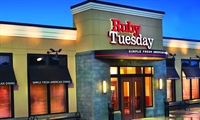 |
Continued slow sales in the casual dining sector is forcing the closure of more restaurants. Ruby Tuesday Inc., which late last week reported a nearly 6% decline in revenue for its fourth quarter, announced it will be closing 95 underperforming restaurants by next month.
The Knoxville, TN, based restaurant chain operates 724 Ruby Tuesday restaurants system-wide, of which 646 were corporate-owned. During previous quarter Ruby Tuesday closed seven restaurants and opened two.
“Our fourth quarter was impacted by softness in the casual dining industry and increased promotional activity by our peers,” noted Ruby Tuesday Chairman and CEO JJ Buettgen. “Given that we expect the macro environment to remain challenging for some time, we are taking the necessary steps to change the trajectory of our business.”
Ruby Tuesday’s news follows last week’s announcement from owners of Logan’s Roadhouse Inc., a Nashville-based casual dining chain with 234 restaurants, had filed for Chapter 11 bankruptcy reorganization and was closing 21 of its restaurants.
Ruby Tuesday’s CEO cited a continuing trend of more people opting to eat more meals at home coupled with increased promotional activity by its competitors as the primary reasons for the declining sales at its stores.
“It’s been competitive for quite some time, but I would say in the last couple of quarters what you see is within casual dining more companies using a broader range vehicle,” said Buettgen. “So people whether its traditional couponing, online efforts, there’s just a lot of brands competing with aggressive offers, at pretty much every place you can reach the consumer,” he said.
Ruby Tuesday recently completed a comprehensive review of its corporate-owned restaurant portfolio and opted to close underperforming restaurants. The as-of-yet-unidentified locations will cease operations by September 2016.
Mike Ellis, chief development officer for Ruby Tuesday, said the real estate review included several criteria for evaluating the performance of individual units, including the financial performance of each restaurant in the portfolio, the market-wide unit count and specific restaurant placement, the demographic makeup surrounding each restaurant, proximity of competitors and nearby traffic generators, and finally considering the lease or ownership structure in place at the location.
“What was clear from this comprehensive review was that underperforming locations shared similar attributes, such as high market concentration, challenged trade areas, or unfavorable population demographics,” Ellis said. “All of these factors contributed to low restaurant-level sales and profitability.”
AUG
[related_posts_content limit="5" title="Related Posts"]














